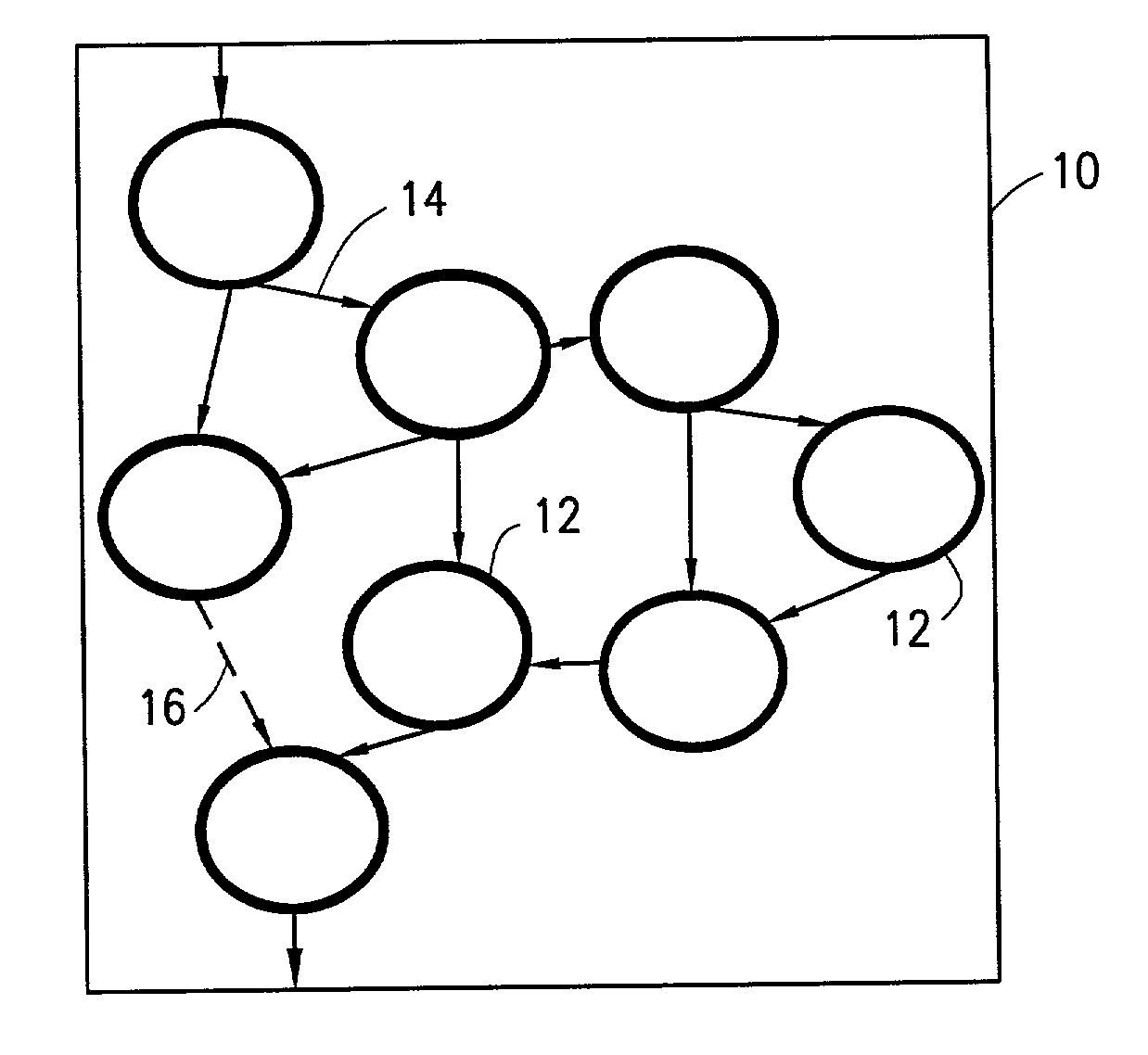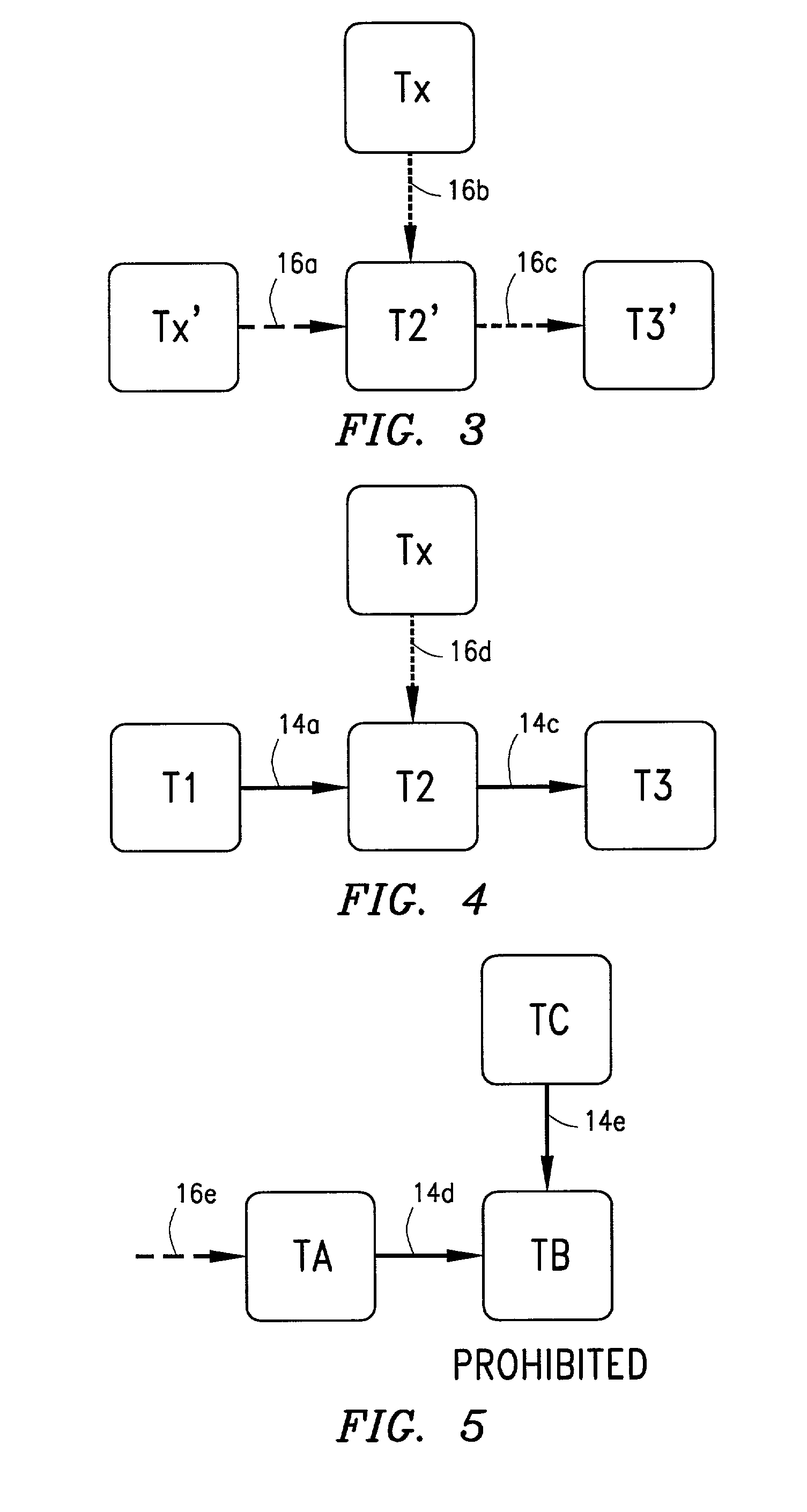Method for modeling and processing asynchronous functional specification for system level architecture synthesis
a technology of system level architecture and functional specification, applied in the direction of instrumentation, program control, cad circuit design, etc., can solve the problems of unintended consequences, resource combinations may have undesirable characteristics or unintended consequences, current architecture synthesis algorithms do not consider execution of asynchronous behavior,
- Summary
- Abstract
- Description
- Claims
- Application Information
AI Technical Summary
Benefits of technology
Problems solved by technology
Method used
Image
Examples
Embodiment Construction
[0015]Referring to FIG. 1, there is shown a task graph 10 that is generated from a functional specification describing the overall behavior of a specified algorithm. Task graph 10 comprises a number of tasks 12, which are interconnected by directed data connections 14 and controllable connections 16, described hereinafter in further detail. Each task 12 has a granularity of a function. The function can be, for example, filters, decoders, processors, data storage / retrieval, cache, memory means, graphics ability, communication means, real-time processing, or substantially any other needed function(s) required by a computer system. Also, each task 12 can be executed on either a software component or a hardware component. Respective data connections 14, depicted as solid lines, represent the flow of data information from initiator tasks to corresponding receptor tasks. Respective control connections 16, depicted as dashed or broken lines, represent the flow of control information.
[0016]...
PUM
 Login to View More
Login to View More Abstract
Description
Claims
Application Information
 Login to View More
Login to View More - R&D
- Intellectual Property
- Life Sciences
- Materials
- Tech Scout
- Unparalleled Data Quality
- Higher Quality Content
- 60% Fewer Hallucinations
Browse by: Latest US Patents, China's latest patents, Technical Efficacy Thesaurus, Application Domain, Technology Topic, Popular Technical Reports.
© 2025 PatSnap. All rights reserved.Legal|Privacy policy|Modern Slavery Act Transparency Statement|Sitemap|About US| Contact US: help@patsnap.com



